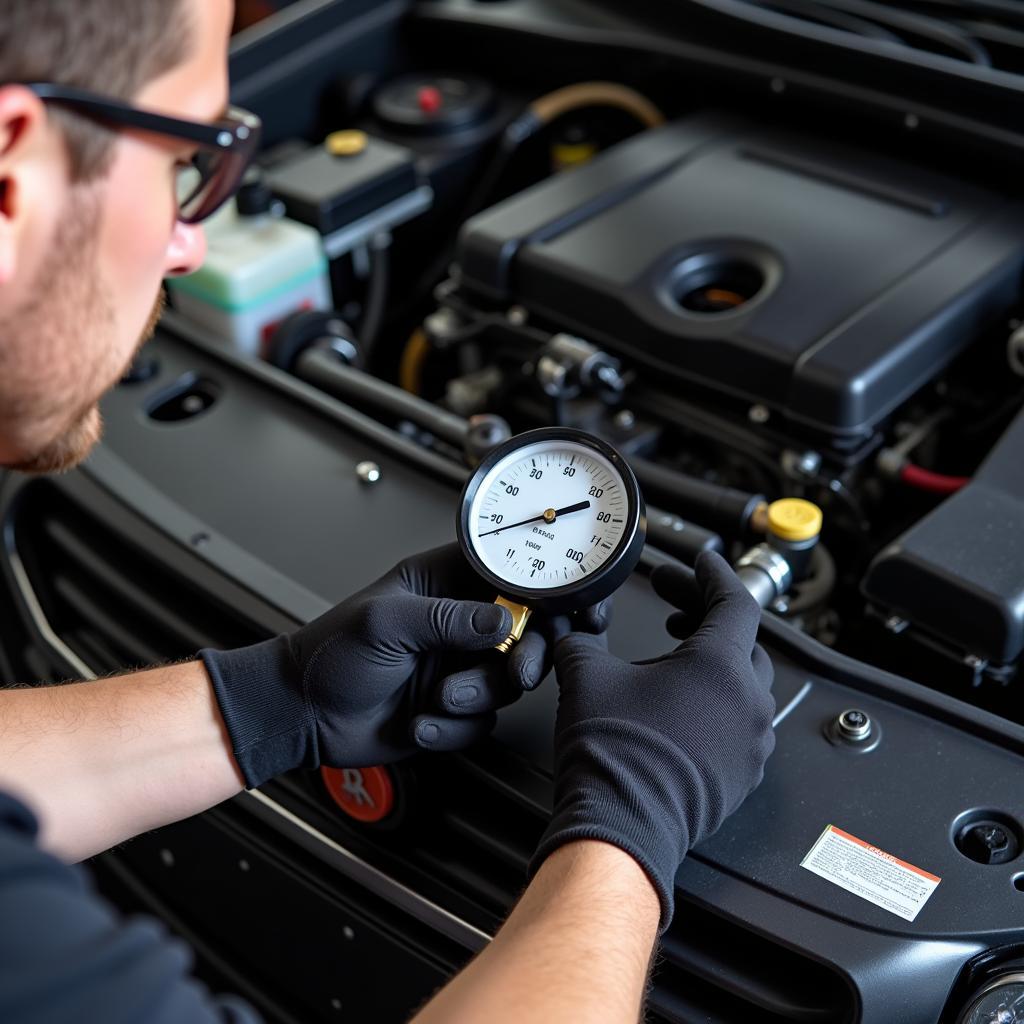Troubleshooting your car’s AC can be frustrating, especially during scorching summer days. A broken AC can quickly turn a pleasant drive into a sweaty ordeal. But before you rush to a mechanic, there are several DIY fixes for no AC in car that you can try. These fixes can often save you time and money, and empower you to take control of your car maintenance. Let’s explore some common AC problems and how to tackle them yourself.
Is your car AC blowing hot air? This comprehensive guide will help you diagnose and fix common AC issues, potentially saving you a trip to the mechanic. Find out how much to fix an AC leak in car.
Identifying the Culprit: Common Causes of Car AC Problems
A non-functional car AC system can stem from various issues, ranging from simple fixes to more complex problems. Understanding the root cause is crucial for effective troubleshooting.
Low Refrigerant Levels
One of the most common reasons for a car AC not blowing cold air is low refrigerant. This can be due to leaks in the system, which require specialized tools to detect and repair.
Faulty AC Compressor
The AC compressor is the heart of the system, responsible for compressing and circulating the refrigerant. If it fails, the AC will cease to function properly. Knowing how much to fix an air compressor in a car can help you budget for potential repairs.
Electrical Issues
Electrical problems, such as a blown fuse, faulty relay, or wiring issues, can disrupt the power supply to the AC system components.
Blocked Condenser or Evaporator
The condenser and evaporator are responsible for heat exchange. If either of these components becomes blocked by debris or dirt, the AC’s cooling capacity can be significantly reduced.
 Checking Car AC Refrigerant Level
Checking Car AC Refrigerant Level
DIY Fix for No AC in Car: Step-by-Step Troubleshooting
Before attempting any repairs, ensure your car is parked on a level surface and the engine is off. Safety is paramount when working with any automotive system.
-
Check the Fuses and Relays: Locate the AC fuse and relay in your car’s fuse box (consult your owner’s manual). Inspect the fuse for any signs of damage and replace it if necessary. Test the relay using a multimeter or by swapping it with a known good one.
-
Inspect the AC Compressor: Visually inspect the compressor for any signs of damage, leaks, or loose connections. Check the drive belt for proper tension and condition.
-
Check for Refrigerant Leaks: While specialized tools are needed for accurate leak detection, you can visually inspect the AC lines and connections for any signs of oil residue or discoloration, which might indicate a leak.
-
Clean the Condenser and Evaporator: Carefully clean the condenser (located at the front of the car) and evaporator (usually located behind the dashboard) using a brush or compressed air. Removing any debris can improve airflow and cooling performance. Want to learn more about overall car AC repair? Check out this helpful resource on fixing air con car.
 Cleaning the Car AC Condenser
Cleaning the Car AC Condenser
“Regular maintenance, like checking refrigerant levels and cleaning the condenser, can prevent many AC problems,” advises John Miller, a seasoned automotive technician with over 20 years of experience.
When to Seek Professional Help
While some AC issues can be addressed with DIY fixes, more complex problems require professional assistance. If you suspect a major component failure, such as a compressor or evaporator issue, it’s best to consult a qualified technician. They have the expertise and equipment to diagnose and repair the problem effectively. You can find resources online about having your air conditioning fixed in car.
 Mechanic Checking Car AC System
Mechanic Checking Car AC System
Preventing Future AC Problems
Regular maintenance is key to keeping your car’s AC system in optimal condition. “Preventive measures, like regular inspections and timely repairs, can extend the lifespan of your AC system and save you money in the long run,” says Sarah Chen, a certified automotive engineer. Consider getting your AC system checked annually by a professional. Learn how to fix ac hose leak in car.
Conclusion: Keeping Your Cool with a Functional Car AC
A working AC system is essential for comfortable driving, especially during hot weather. By understanding the common causes of AC problems and following the Diy Fix For No Ac In Car outlined in this guide, you can often resolve minor issues yourself. However, don’t hesitate to seek professional help when needed. A properly functioning AC system will keep you cool and comfortable on the road for years to come. Contact AutoTipPro at +1 (641) 206-8880 or visit our office at 500 N St Mary’s St, San Antonio, TX 78205, United States, for professional assistance.





Leave a Reply